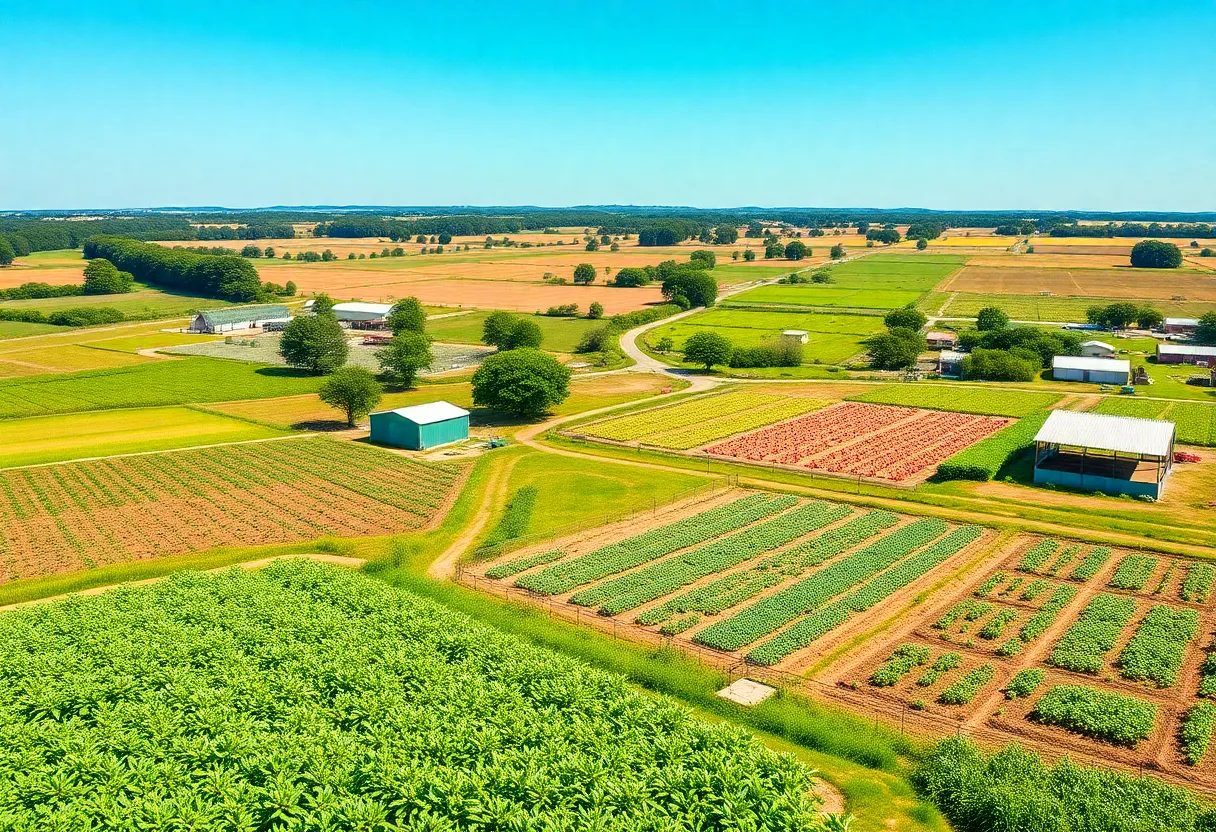News Summary
Georgia’s agricultural sector has demonstrated impressive resilience, achieving a farm gate value of $17.6 billion and a total economic impact of $91.4 billion. Poultry remains the largest commodity, while challenges like rising costs and labor shortages persist. The Sunbelt Ag Expo will showcase the industry’s advancements, and ongoing research aims to enhance sustainability. Despite facing obstacles such as severe weather, the state’s commitment to innovation positions it for future growth and stability.
Atlanta, Georgia – In 2023, Georgia’s agricultural industry demonstrated remarkable resilience and growth, generating a farm gate value of $17.6 billion and reaching a total economic impact of $91.4 billion across the state and neighboring regions. This sector not only showcases the state’s diverse agricultural production but also supports employment for over 381,000 residents both directly and indirectly.
As the largest commodity sector in Georgia, poultry—particularly broilers and eggs—accounts for approximately 38% of the total farm gate value. Other key sectors contributing to the state’s agricultural profile include row crops, livestock, ornamental horticulture, fruits and vegetables, and timber. While poultry production is primarily concentrated in northern Georgia, row crops, along with fruits and vegetables, thrive particularly well in the southern regions. Ornamental horticulture tends to flourish around urban areas, while livestock operations are distributed throughout the state.
Georgia is set to take center stage at this year’s Sunbelt Ag Expo, which begins on October 14, highlighting the advancements and contributions of the state’s agriculture. A significant component of its success is the Georgia Grown promotional campaign, which boasts over 90% awareness among state residents. Approximately 70% of Georgians have encountered the label on products, further extending its reach into neighboring Southeastern markets.
Research plays a critical role in enhancing the agriculture sector’s resilience and profitability. Institutions like the University of Georgia contribute to developing higher-yielding crops, mitigating pest pressures, implementing cost-saving technologies, and educating stakeholders on risk management and sustainable practices. Collaborative efforts support farmers in adapting to challenges posed by climate change and market fluctuations.
Challenges Facing the Agricultural Sector
Despite the robust economic impact, Georgia’s agricultural industry faces several pressing challenges. Rising costs, particularly for inputs such as fertilizer and fuel, have surged over 70% since 2020. The H-2A adverse effect wage rate has increased by 37% from 2020 to 2025, intensifying labor dependency issues, especially in fruit and vegetable production.
The agricultural industry also grapples with labor shortages driven by complicated H-2A requirements, the outmigration of farm children to non-agricultural jobs, and a decline in second-generation workers due to decreased immigration. Additionally, the aging farming population raises concerns about the long-term stability of rural communities and economic diversity, as there is limited enthusiasm from younger generations to pursue careers in farming.
Georgia agriculture has also been significantly affected by severe weather, including Hurricane Helene, which reportedly caused an estimated $2.5 billion in damages in 2023. This has posed difficult decisions for farmers, especially those involved in long-term crop production, where recovery timelines may exceed the careers of older agricultural producers.
Future Outlook
Despite the myriad of challenges, the outlook for Georgia agriculture remains optimistic. The state’s rich heritage and commitment to innovation, combined with a supportive network of stakeholders, lay the groundwork for future success. Policymakers have enacted legislation aimed at enhancing the competitiveness of producers in global markets by reducing legal liabilities through right-to-farm laws. These strategies may help the industry weather fluctuations while adapting to emerging difficulties.
In conclusion, Georgia’s agricultural sector stands as a vital component of both the state and regional economies. Its ability to adapt, innovate, and foster new generations of farmers will be critical for maintaining sustainability and ensuring continued growth in the years to come.
Deeper Dive: News & Info About This Topic
- Augusta Chronicle: Georgia Tech’s Research on Carbon Dioxide Removal
- Wikipedia: Agriculture in Georgia (U.S.)
- National Hog Farmer: Wild Pigs in Georgia
- Google Search: Georgia agriculture
- Morning Ag Clips: USDA Secretary Visits UGA
- Google Scholar: Georgia Agricultural Research
- WRDW: AI in Agriculture in Georgia
- Encyclopedia Britannica: Agriculture
- CropLife: New Agriculture Research Facility at UGA

Author: STAFF HERE AUGUSTA WRITER
The AUGUSTA STAFF WRITER represents the experienced team at HEREAugusta.com, your go-to source for actionable local news and information in Augusta, Richmond County, and beyond. Specializing in "news you can use," we cover essential topics like product reviews for personal and business needs, local business directories, politics, real estate trends, neighborhood insights, and state news affecting the area—with deep expertise drawn from years of dedicated reporting and strong community input, including local press releases and business updates. We deliver top reporting on high-value events such as Arts in the Heart Festival, Westobou Festival, and Masters Week. Our coverage extends to key organizations like the Augusta Metro Chamber of Commerce and Greater Augusta Arts Council, plus leading businesses in manufacturing and healthcare that power the local economy such as Textron Specialized Vehicles, Cardinal Health, and Nutrien. As part of the broader HERE network, including HEREAtlanta.com and HERESavannah.com, we provide comprehensive, credible insights into Georgia's dynamic landscape.





